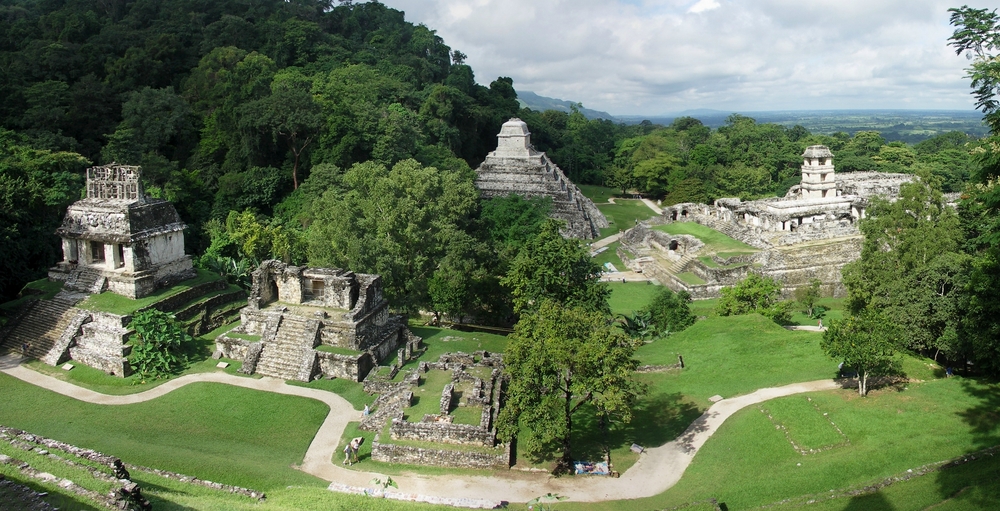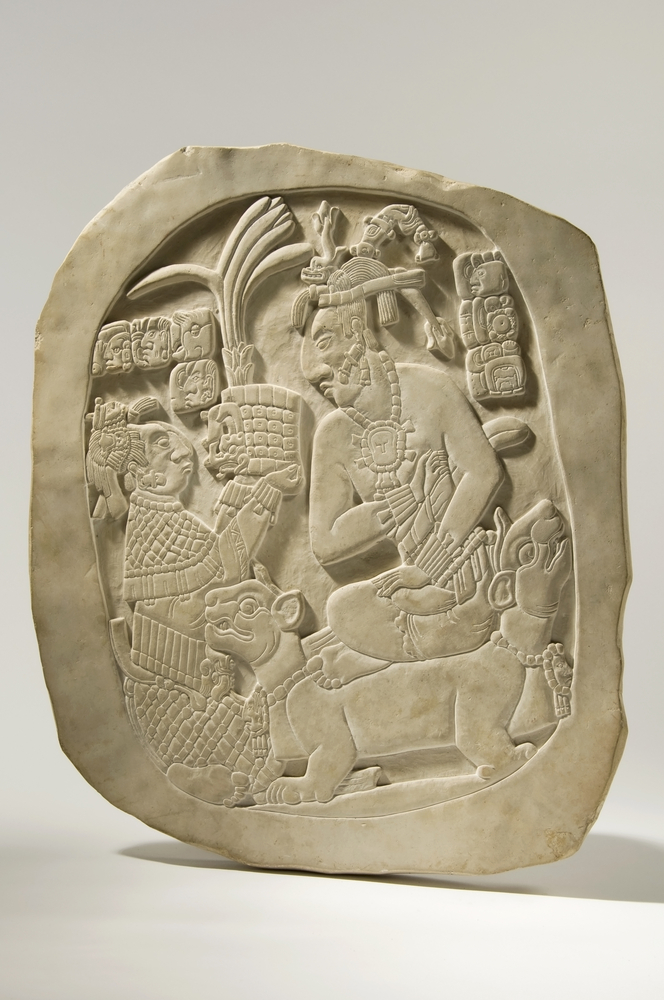Palenque: Maya City of Temples

Palenque is an ancient Maya city located about 500 miles (800 km) southeast of Mexico City. It lies in northern Chiapas, near the bottom of a highland, overlooking a vast plain.
Its ancient name was Lakamha (“Big Water”) and its modern name comes from the nearby Spanish colonial settlement of Santo Domingo de Palenque. Although probably known to the local modern Maya, it was rediscovered by European explorers in the 18th century and even elicited the interest of King Charles III of Spain.
Pakal’s city
Archaeological finds indicate that the city was occupied at least as early as 500 B.C. but reached its peak in the seventh century A.D. under the rule of K’inich Janaab Pakal, also known as “Pakal the Great.” It was during his reign that Palenque recovered from invasions by its rival Calakmul (a city located 180 miles to the northeast) and launched a major building program that would see the development of a palace 300 feet by 240 feet (90 meters by 70 meters) and construction of the “Temple of the Inscriptions,” which sits on top of a step pyramid about 65 feet (20 meters) high.
There was an abundant supply of soft limestone nearby that allowed the city’s artists to carve intricate reliefs.
“Most of what we see of Palenque, in that central area, is Pakal’s city, it always was, even to the kings that came much later,” said University of Texas researcher David Stuart in a lecture given online on "National Geographic Live."

Coming to the throne in A.D. 615 at the age of 12, Pakal was given the war headdress of kingship by his mother Ix Sak K’uk, an event depicted on an oval tablet discovered in the palace’s white throne room. When Pakal died at about age 80, he was buried along with five or six human sacrifices in a jade-filled tomb (including a jade funerary mask he wore) deep inside his pyramid. His sarcophagus shows the king’s rebirth and depictions of his ancestors in the form of plants. The tomb was re-discovered in 1952.
It’s “the American equivalent, if there is one, to King Tut’s tomb,” said Stuart in the lecture. “He [Pakal] was really venerated by later kings, his descendents, as a great historical figure that really brought Palenque back from the brink.”
His wife appears to have been buried in a smaller tomb located next to the pyramid. Her burial was rich with red cinnabar and contained two human sacrifices.
Gods and temples
The panels in the Temple of the Inscriptions include a text that “is among the longest known from any Maya site,” write George and David Stuart in their book "Palenque: Eternal City of the Maya" (Thames & Hudson, 2008). The text combines “Palenque’s dynastic history with highly specific descriptions of rites associated with the three patron gods of Palenque.”
This triad, which scholars call gods one, two and three (their exact names are difficult to discern) were said to have been created by a progenitor god in 2360 B.C. in the mythical land of Matwiil.
This triad was honored by Pakal’s son and successor K’inich Kan Bahlam, who built three temples, known to us as the “cross group,” in their honor. The temples were constructed just to the southeast of the palace and are now called the Temple of the Cross, Temple of the Foliated Cross and the Temple of the Sun. Archaeologist Michael Coe writes in his book "The Maya" (eighth edition, Thames and Hudson, 2011) that their designs are similar, a stepped platform containing an outer and inner room with sanctuary and a carved relief tablet. Each temple has a “comb” on their roof that looks like a giant honeycomb.
The Stuarts write that the Temple of the Cross honored god one, an aquatic deity with “strong solar associations,” who was the leader of the three. God two, also known as “Unen K’awiil” (Infant K’awiil), was honored in the Temple of the Foliated Cross and was a “deity of lightning.” God three was honored in the Temple of the Sun and was related to the sun god, his temple associated with war.
As their name suggests, the cross and foliated cross temples have tablets that depict giant crosses at center. While they do bear an “astonishing resemblance to the Christian cross,” Coe said, they are in fact depictions of the Maya “branching world tree,” a motif that the Maya used to envision the cosmos.
Early history — before King Pakal
The early history of the city is poorly understood, write the Stuarts. They point out that the earliest building that we know of dates to, perhaps, A.D. 400. Furthermore, inscriptions tell us that the earliest king at Palenque was a man called “Snake Spine,” who supposedly ascended to the throne in 967 B.C., long before the city even existed. The authors note that Snake Spine would have reigned at a time when the Olmecs, an earlier civilization in Mexico, were flourishing.
Determining real kings from mythical ones is difficult, but it appears that by the end of the fifth century a dynasty of rulers was established at Palenque. Recently, archaeologists have been probing a tomb under temple XX using a video camera. The tomb is believed to be that of a Maya ruler who ruled before Pakal’s time, somewhere between A.D. 431 and 550.
Researcher Edwin Barnhart notes in a paper published in the book "Palenque: Recent Investigations at the Classic Maya Center" (AltaMira Press, 2007) that Palenque would become one of the most densely populated Maya cities we know about. At its height in the seventh and eighth centuries its urban core had a population as high as 6,200 people living in 2.2 square kilometers (0.8 square miles) of land. Researchers have found evidence of sophisticated engineering techniques, including a water pressure system that may have been used to create a fountain.
The city’s end
Between the late eighth and early 10th centuries, the ancient Maya civilization collapsed (although the descendents of the people live on today). Palenque was no exception with archaeological evidence indicating that the city was abandoned by A.D. 850, if not earlier.
George and David Stuart note that the last known inscription at Palenque was carved on Nov. 17, 799, and was recorded on a vase. It records the name of a nobleman named “Janab Pakal,” who may have been the city’s last ruler. His name is apparently in honor of the great king who reigned more than a century earlier.
What led to the collapse of the Maya is a matter of debate but recent research suggests that drought caused by climate change played an important role. It appears that no Maya king, regardless of whose name they took, had the power to stop the natural calamity.
Related:
Sign up for the Live Science daily newsletter now
Get the world’s most fascinating discoveries delivered straight to your inbox.

Owen Jarus is a regular contributor to Live Science who writes about archaeology and humans' past. He has also written for The Independent (UK), The Canadian Press (CP) and The Associated Press (AP), among others. Owen has a bachelor of arts degree from the University of Toronto and a journalism degree from Ryerson University.










